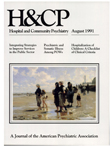A Problem-Solving Approach to Group Psychotherapy in the Inpatient Milieu
Abstract
Because of the trend toward a marked decrease in length of psychiatric hospitalization, clinicians need to improve the organization of the therapeutic milieu so that behavioral changes can be effected more rapidly. A university general psychiatric unit has adapted a problem-solving model that integrates groups and activities so that each one focuses on complementary behavioral objectives for each patient with the aim of effecting more rapid behavior change. The stages of the model are incorporated in a weekly sequence that begins with a goal-setting group. In a series of subsequent groups, each patient tries to develop and implement a solution to the problem identified that week. At the end of each week, patients participate in a goal review group, with feedback from staff and peers and self-reinforcement. The model can be used with a diverse patient population without interfering with each patient's individual psychotherapy or pharmacotherapy.
Access content
To read the fulltext, please use one of the options below to sign in or purchase access.- Personal login
- Institutional Login
- Sign in via OpenAthens
- Register for access
-
Please login/register if you wish to pair your device and check access availability.
Not a subscriber?
PsychiatryOnline subscription options offer access to the DSM-5 library, books, journals, CME, and patient resources. This all-in-one virtual library provides psychiatrists and mental health professionals with key resources for diagnosis, treatment, research, and professional development.
Need more help? PsychiatryOnline Customer Service may be reached by emailing [email protected] or by calling 800-368-5777 (in the U.S.) or 703-907-7322 (outside the U.S.).



